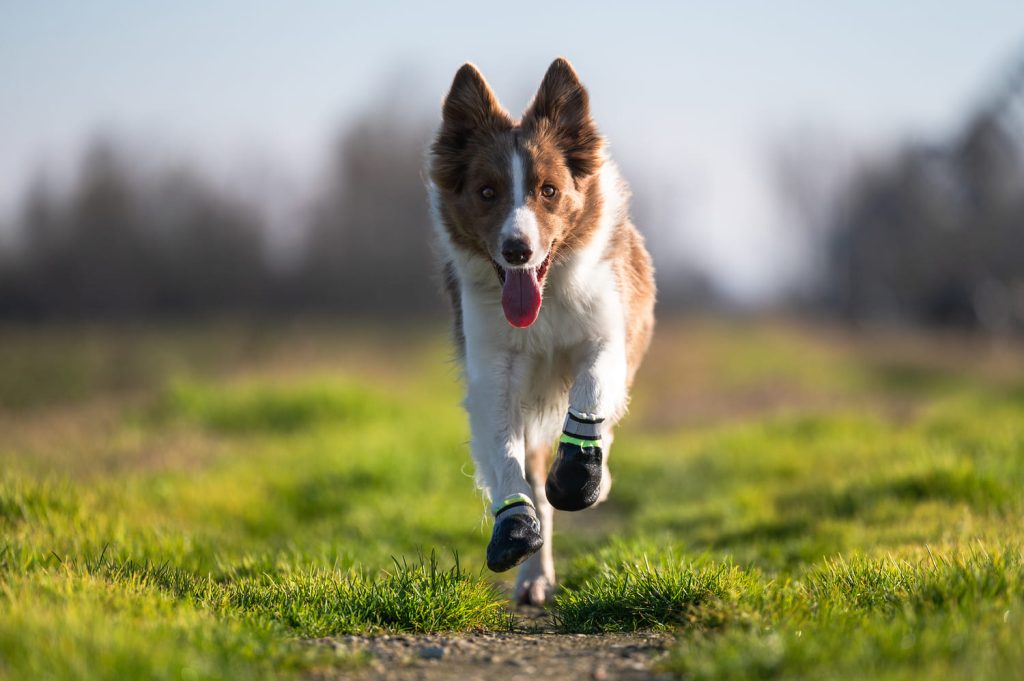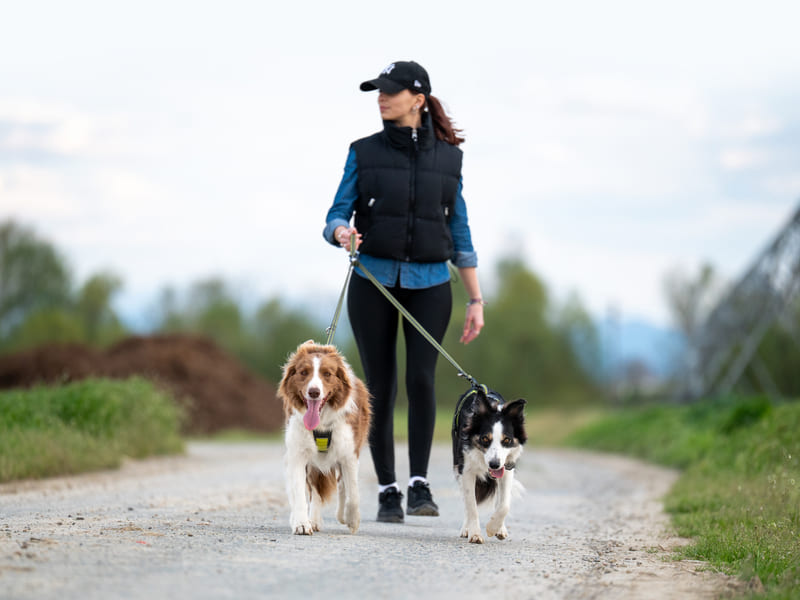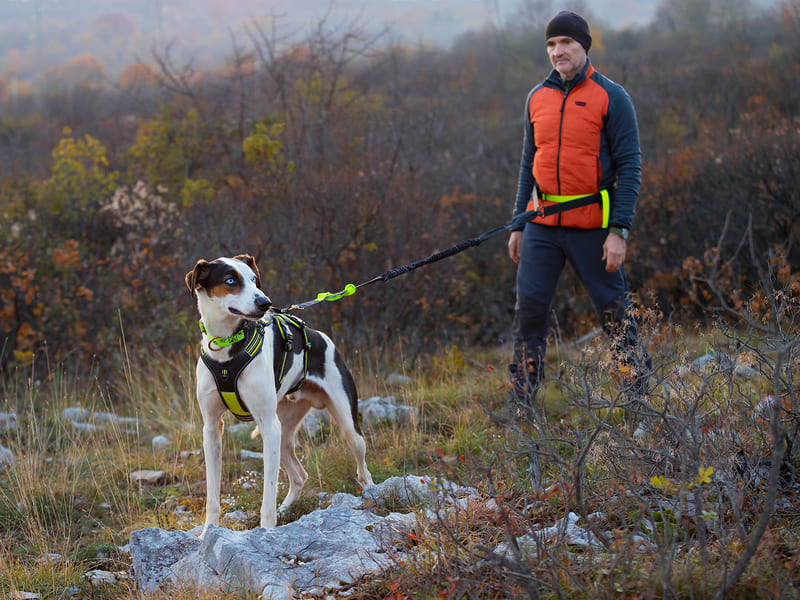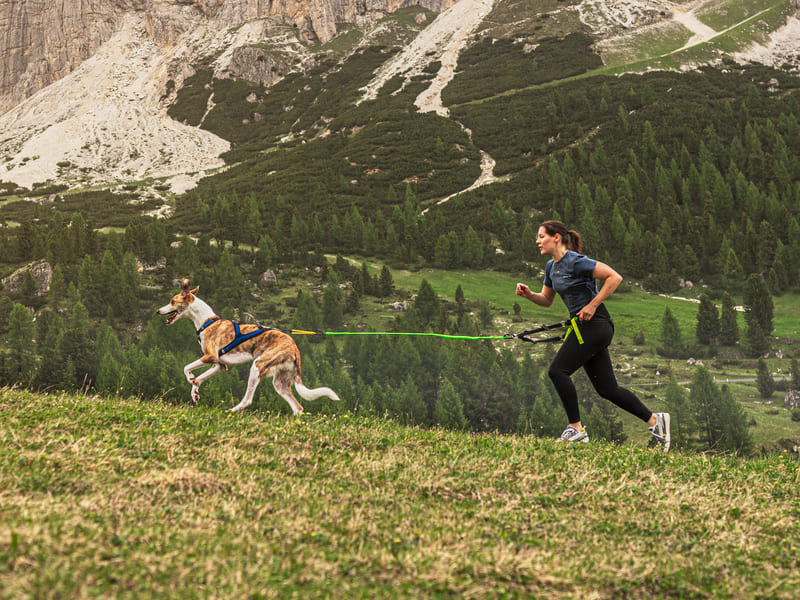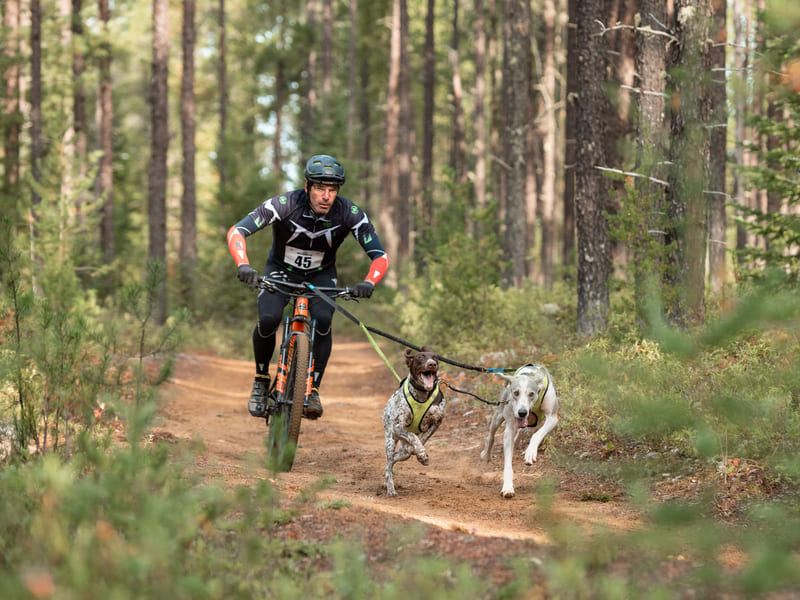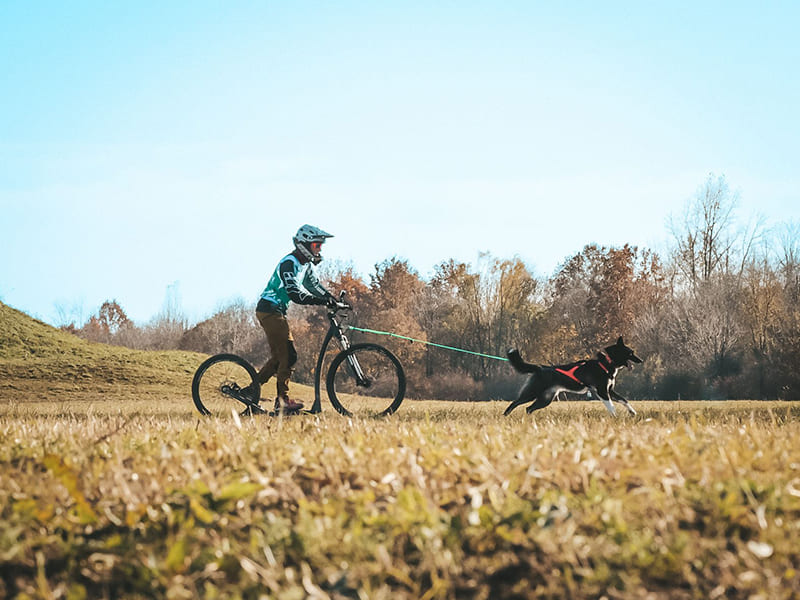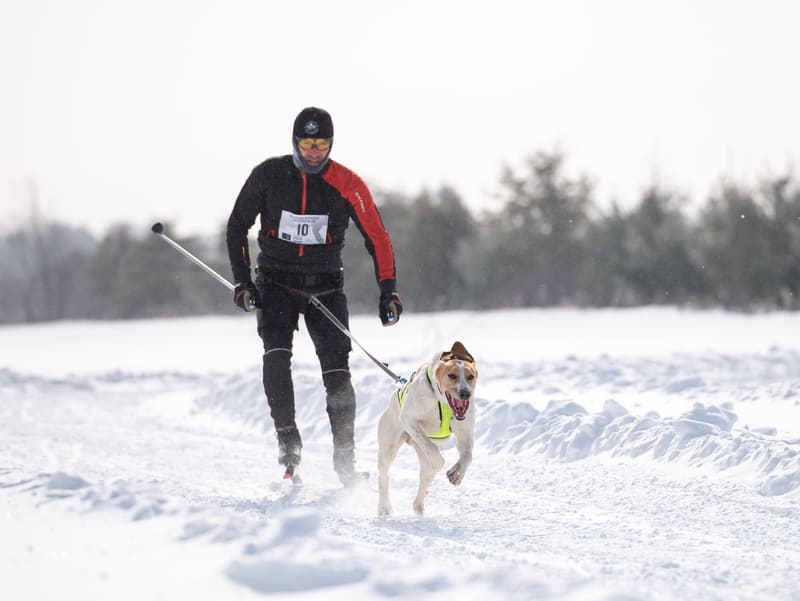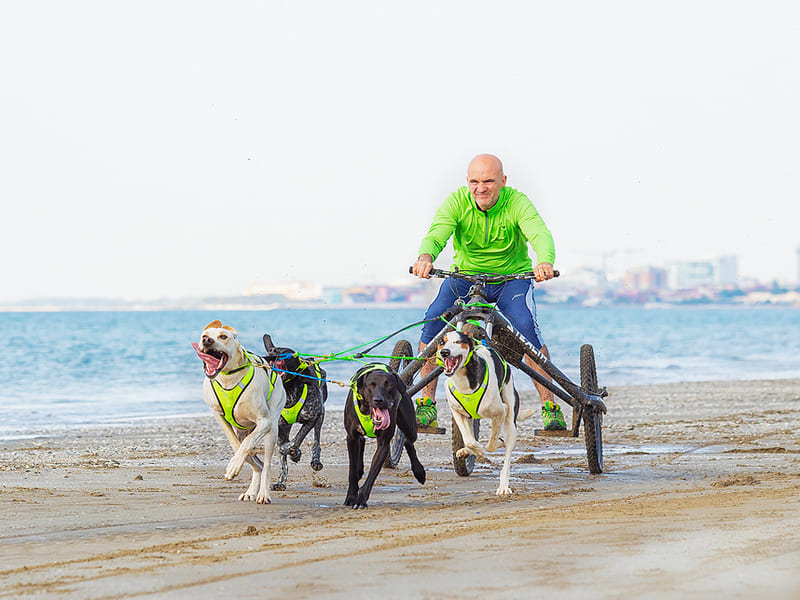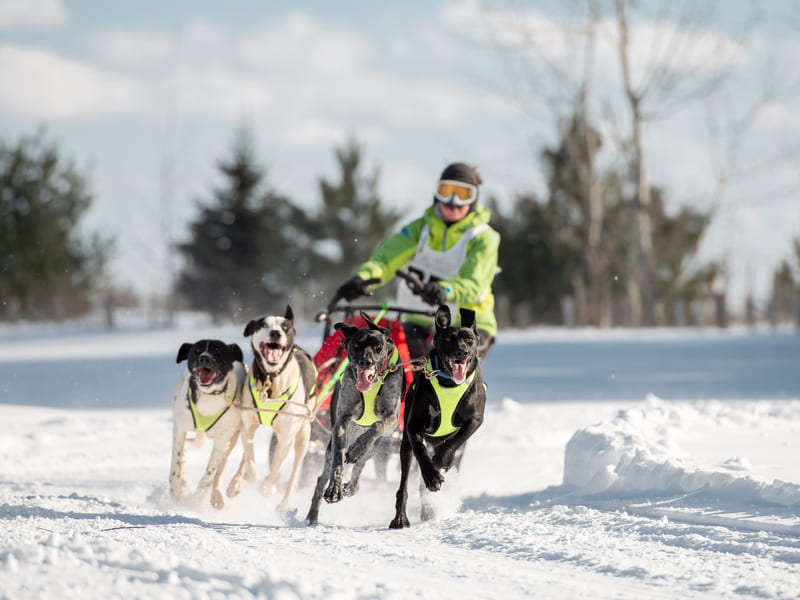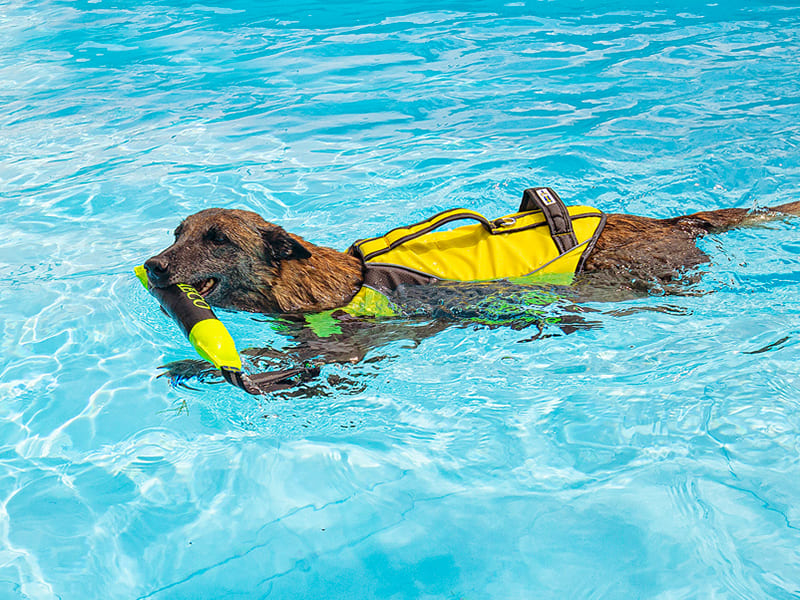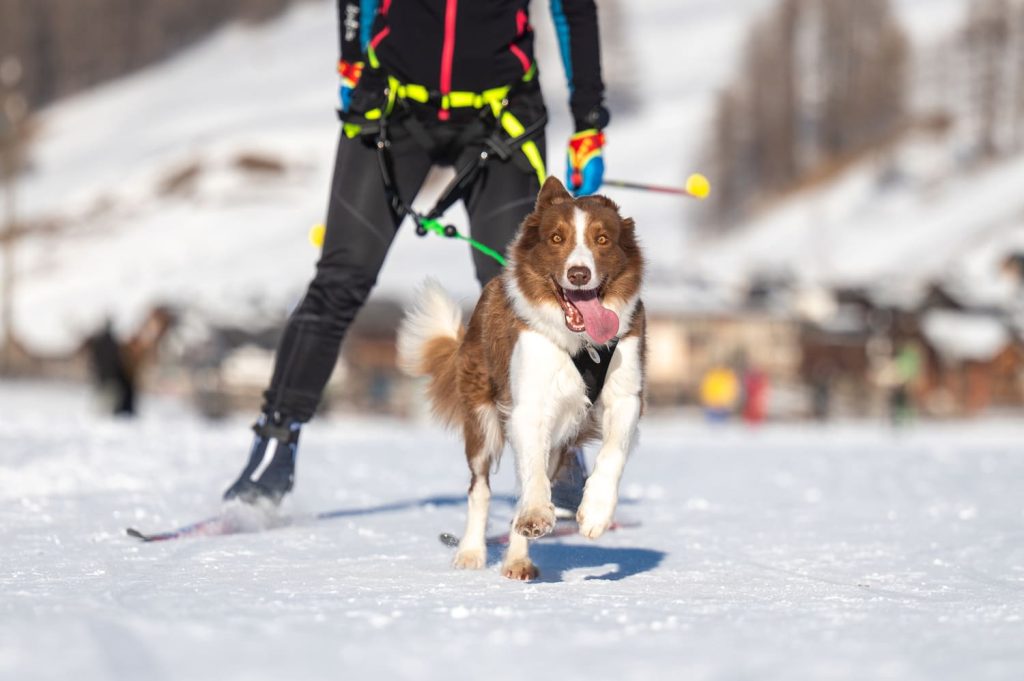Summary
1. Keep nails at an ideal length
A dog’s nails are fascinating, functional structures that merit our care and attention. Made primarily of keratin, the same substance that makes up our own nails, a dog’s nails are actually an extension of their toe bone.
What are the functions of a dog’s nails?
- Protecting the third knuckle
- Feeling the environment
- Providing grip on unstable terrain
- Supporting proper unfolding of the paw
- Food related behaviours: scratching, grasping
Ideally, a dog’s nails should be just short enough that when the dog is standing still the nail doesn’t touch the ground but will make contact with terrain when the dog is on the move. This length allows the dog to use its nails effectively while reducing the risk of injury. Nails that are too long are vulnerable to damage, while nails that are too short lose their natural function.
What are the consequences of overgrown nails?
Contrary to what some people think, a dog’s nails don’t help with their balance as it’s actually the paw pads that help dogs navigate their environment, and long nails can interfere with this ability.
When nails are so long to be in constant contact with the floor, they don’t stop growing, and that’s when they become risky. Constant contact actually stimulates the nail to grow more which means that long nails grow faster than short ones. Given that a dog's nails are an extension of the bone in their toes, they’re highly sensitive. As a result, every step the dog takes can be extremely painful if their nails are too long. To relieve this discomfort, the dog will shift its weight backwards, forcing its legs and paws to adjust. This flattens the foot and stretches the tendons, which is painful for the dog. Over time, if the nails aren’t trimmed, these changes can become permanent.
The dog’s gait and posture are affected, and their weight is distributed unevenly. This can lead to sore muscles, chronic tendon injuries, and joint and bone issues such as early-onset arthritis.
Additionally, longer nails dramatically increase the risk of other injuries like the nail breaking, splitting, or falling off and even toe fractures.
Flat Foot vs. Well-Maintained Paw
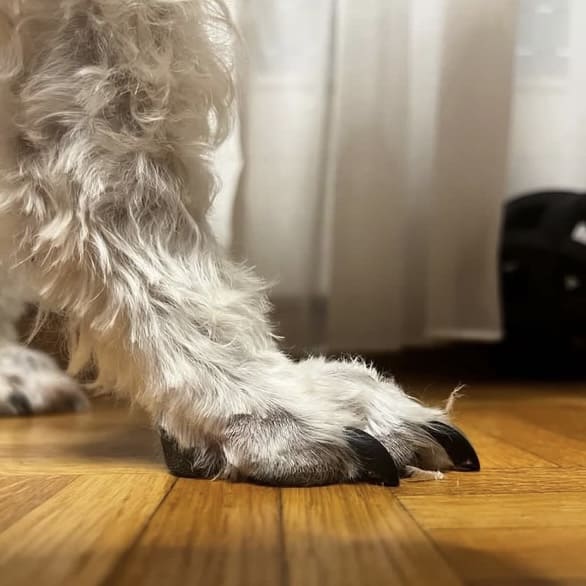
Flat foot: The toes are straight, and the nails touch the ground.
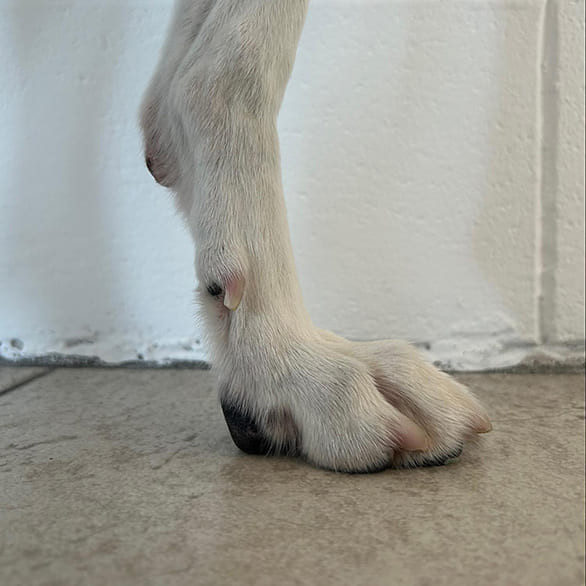
Well-maintained paw: The foot is compact, the toes are angled, and the nails don’t touch the ground.
As for the dewclaw (the claw higher up on the leg), its length doesn’t affect the shape of the foot, but it still requires regular attention. If neglected, it can grow in a curved shape and dig into the paw pad, causing pain or injury. Overgrown dew claws are also prone to getting caught on objects, which can lead to tearing or even complete removal. To prevent these issues, regular trimming of the dewclaw is recommended.
Can dogs wear down their nails naturally?
Yes… and no.
It’s often said that if you regularly walk your dog, you don’t need to trim their nails. Sometimes people who trim their dog's nails are even ridiculed, as if it's a sign that they’re not walking them enough.
But the truth is far more nuanced. While it’s true that some dogs, depending on their genetics, weight, activity level, and the type of surface they walk on, might have limited nail growth, regular trimming is still essential for most dogs.
In theory, dogs can wear their nails down naturally, but it would involve them walking on different abrasive surfaces and terrains:
- Every day
- For extended periods
- At varied paces (walking, trotting, running)
- In all kinds of weather
Because of age, physiology, health issues, past injuries, and human lifestyle constraints, this simply isn't realistic for most domesticated dogs.
Most pet dogs spend ¾ of their lives on non-abrasive, man-made surfaces, including pavements (our shoes wouldn’t last long if pavements were abrasive). Plus, making a dog run on hard surfaces, such as roads, just to file down their nails would be harmful to their joints.
Truly abrasive surfaces are things like rocky trails and sandy or pebble beaches: terrains which most urban and suburban dogs rarely encounter on a daily basis.
For smaller dogs, nail trimming is even more crucial. Their lower body weight means they exert less pressure on their nails, making natural wear virtually impossible. The same goes for dogs with posture or limb alignment issues, such as a limp. These conditions prevent proper nail wear and make regular maintenance an absolute must. Natural wear can also be unlikely for certain breeds or genetic makeup, as nowadays most dogs are not bred for their function and health but to conform to breed standards, which can create paw structures that are less suited to natural wear.
How often should you cut your dog’s nails?
While it depends on age, activity level, individual characteristics, and past care, a simple and effective recommendation is to trim the nails weekly, removing the past week’s growth. However, many dogs do well with a trimming cycle of every two to three weeks.
If your dog’s nails haven’t been trimmed (or not enough) for a long time, the quick may have grown out along with the nails. Which means that you can’t cut the nails to the ideal length without causing bleeding. In this case, it’s time to start gradually helping the quick recede. To do this, you need to file your dog’s nails as close to the quick as possible at least twice a week.
Dog nails and sports
While some people suggest that keeping a dog's nails long can enhance their athletic performance, it's important to consider the bigger picture.
Firstly, long nails are actually weaker and can reduce, rather than improve, traction. They're also more prone to breakage, which can lead to painful injuries.
Additionally, sport dogs are often also pets, living in environments designed for humans, with hard floors inside the house and pavements outside. As mentioned earlier, long nails on such surfaces can be painful and may lead to joint and muscle issues, a serious concern for canine athletes.
However, in pulling sports, where dogs run on soft ground such as dirt or grass, it is true that a bit of nail contact can improve grip. In these sports, nails that just barely touch the ground when the dog is standing could be a good compromise. This helps offer optimal traction while still avoiding paw deformities. Achieving this balance requires more frequent maintenance: very regularly filing the nails by a small amount to maintain the perfect length.
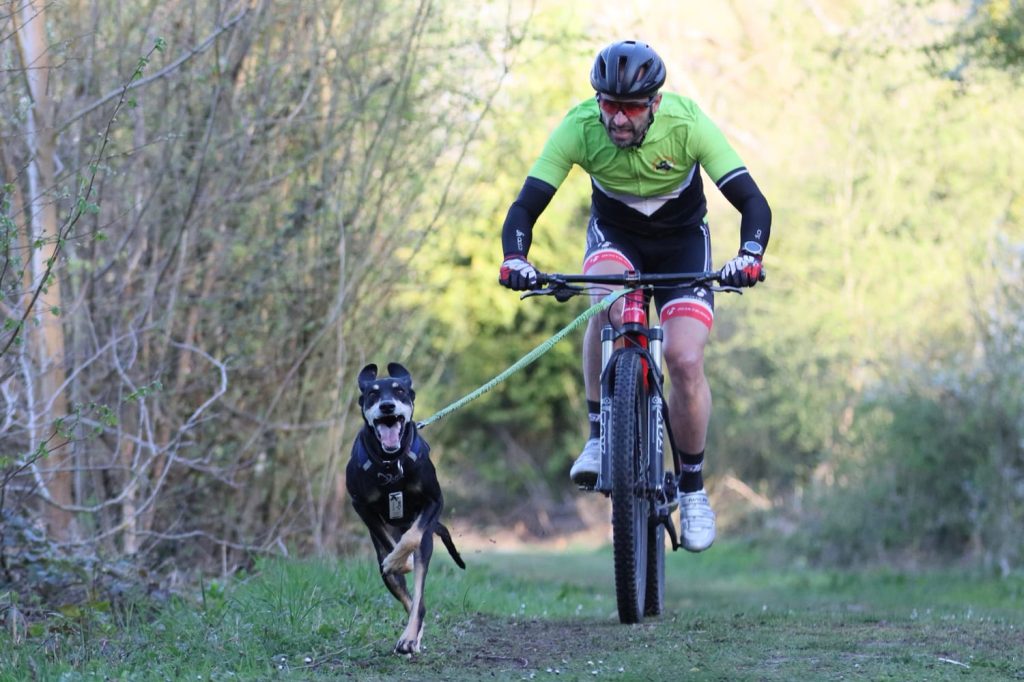
Dog nails and mushing
While it’s more acceptable for dogs that live exclusively outdoors, and don’t walk on hard surfaces, to have longer nails, regular maintenance is still necessary to avoid injuries during training.
Sled dogs’ nails can grow quite long over the winter, as snow doesn’t provide any natural wear. It's especially important to trim nails before the ground becomes icy, as long nails are more likely to break. Regular trimming during winter is still beneficial to prevent the quick from growing out too much. A good musher's advice: trim your whole team’s nails roughly every two weeks!
During the dryland season, sled dogs’ nails get a lot more natural wear thanks to intense training on rough terrain. Still, it’s important to keep a close eye on them and trim when necessary.
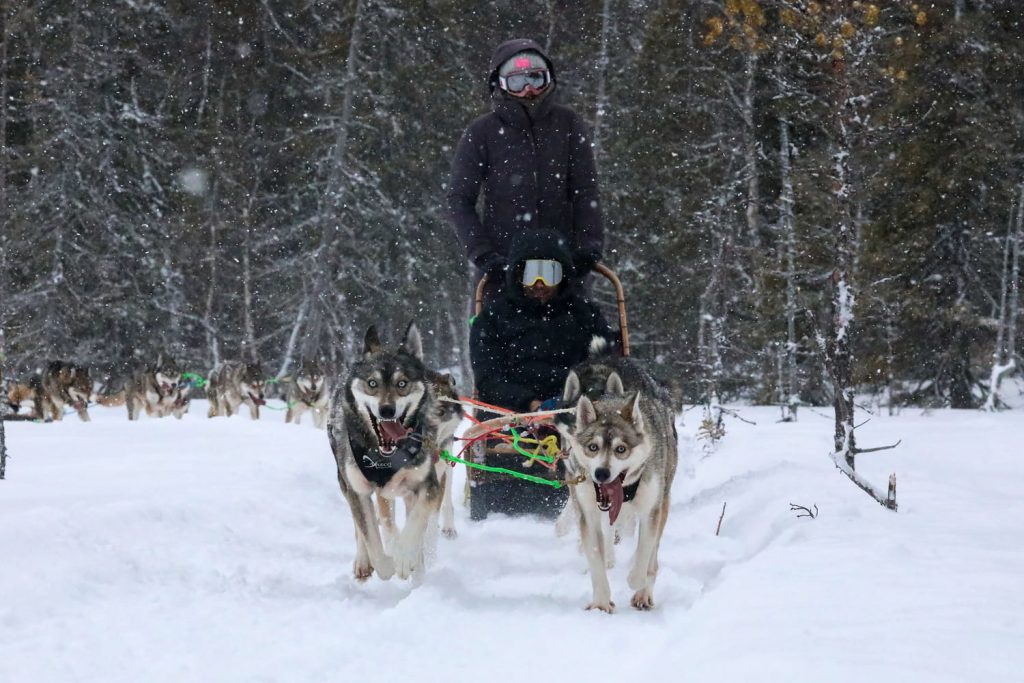
Tools: Nail clippers, electric nail file, manual nail file, scratchboard.
2. Trim excess hair between paw pads and toes
The hair between a dog’s paw pads doesn’t serve a functional purpose, such as protecting against heat or cold. In fact, it can actually interfere with the paw's natural functions. In hot weather, pad fur can trap moisture and block proper sweat evaporation. In snowy conditions, it encourages the formation of snowballs between the toes.
For mushers, it's especially important to trim paw hair when the snow is dry. In wet conditions, snowballs don’t usually form.
Trimming this hair offers several other benefits:
- Provides a clearer view of nail length for proper maintenance
- Helps prevent slipping, which can lead to joint strain or pain
- Improves drying efficiency, reducing the risk of yeast or fungal infections
- Lowers the chance of foxtail seeds or debris getting lodged between the toes
- Makes it easier to check for ticks and other hidden irritants
Tools: Clippers, scissors.
3. Encourage healthy, resilient paw pads
To help prevent injuries, a dog’s paw pads should be both strong and supple. One of the best ways to encourage pad toughness is by regularly walking your dog on a variety of surfaces. The small, consistent stresses that the paw pads are exposed to can help to naturally toughen them up. On the other hand, paw pads that are overly protected, such as walking only on soft ground or using booties too often, tend to become weak and more prone to injury.
To maintain softness and prevent cracking, you can also apply a paw ointment to keep the pads hydrated. However, it's better to avoid using products with a strong taste and, after applying the ointment, you might want to put booties on your dog to stop them licking the balm off. Licking can actually worsen dryness!
You should be especially attentive to the pads in summer and the dangers posed by hot surfaces such as pavements. For example, if the outside air temperature is 25°C, the pavement can reach 52°C. At this temperature, paw pads will burn in under 1 minute!
If you live near the sea, it is recommended that you rinse your dog’s paws every time they come into contact with salt water to stop the pads drying out!
Tools: Paw ointment, booties.
4. Strengthen and check toes
Dogs get stronger toes from digging and running on different surfaces and terrains.
As their toes can be prone to sprains, especially if the nails are too long, it is important to regularly get your dog’s toes checked by a vet or canine osteopath.
5. Use booties when necessary
Booties are a great aid to keeping paws healthy! Here’s a non-exhaustive list of situations when booties can be useful:
- To prevent injuries on rough ground
- To protect injured or healing paws
- To shield against road salt in winter and hot pavements in summer
- To stop snowballs forming between the toes
- To protect against foxtail seeds and other debris
- To prevent the dog from licking off paw ointment
Which booties to choose?
Fabric booties are designed to prevent snow from forming ice balls between your dog’s toes. They are commonly used in mushing, but are also useful for all other snowy activities. If used on dryland, they can rip or absorb water which will make them heavy and get lost easily.
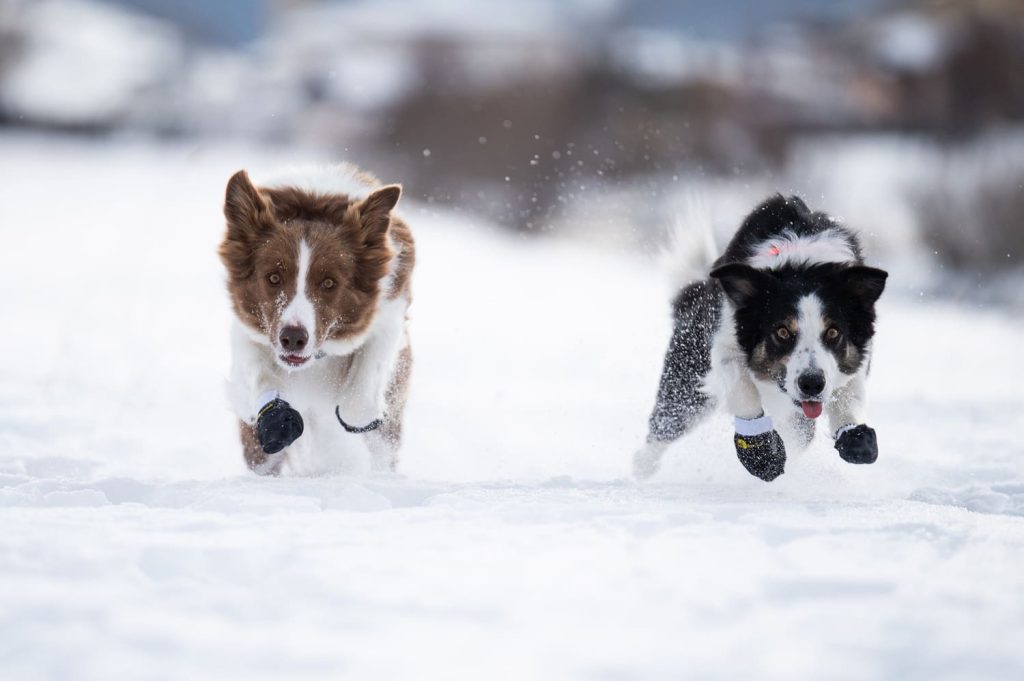
Rubber booties are ideal for dryland adventures that are tough on your dog’s paw pads. They are great for rocky hikes, kart training, outings on hot pavements and more.
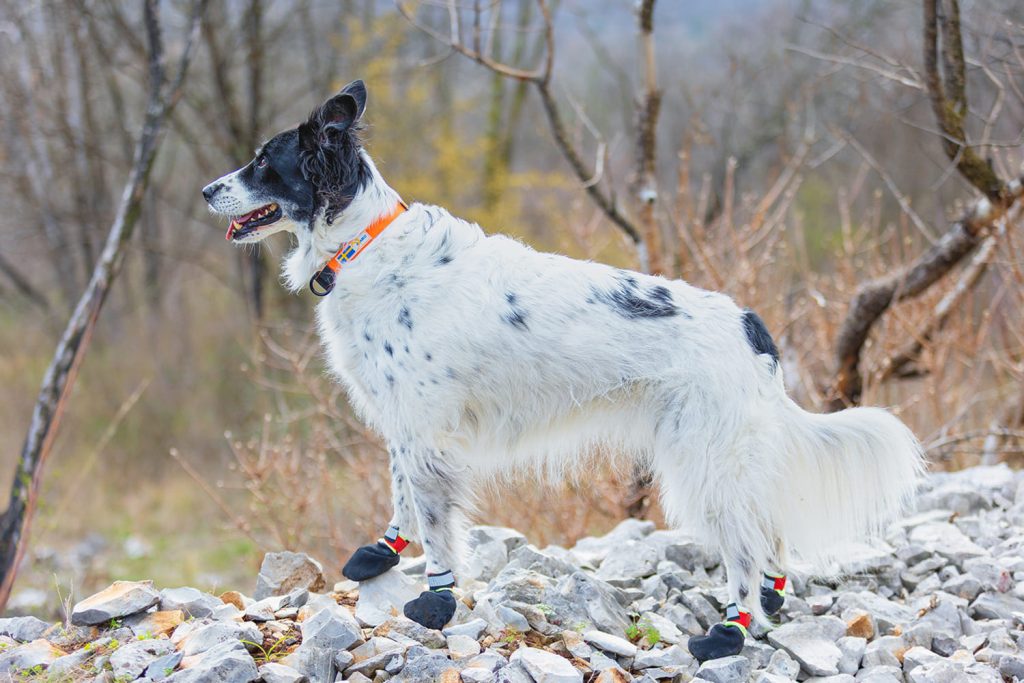
Rigid dog shoes should be avoided as they prevent the dog from feeling the ground properly and are too heavy. Booties should never change the way the toes touch the ground!
Watch out for the dewclaw when using booties
On some dogs, booties stop just at the height of the dewclaw. If this is the case for your dog, you can bandage under the dewclaw before putting on the bootie so the dewclaw’s nail doesn’t press into the skin.
Protecting injured paws
It’s better to use two booties, even if only one paw is injured. This helps prevent the dog from putting more weight on the paw without a bootie, which could affect their balance and lead to strains. Maintaining symmetry is always the best approach to keep your dog comfortable.
